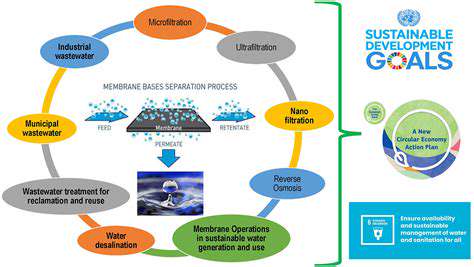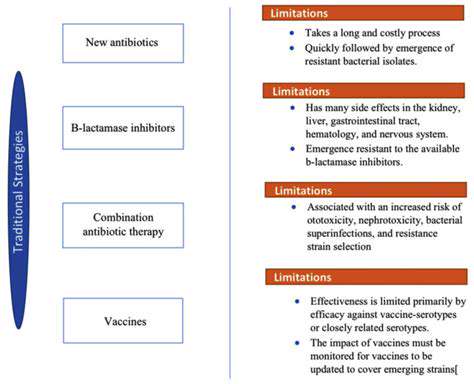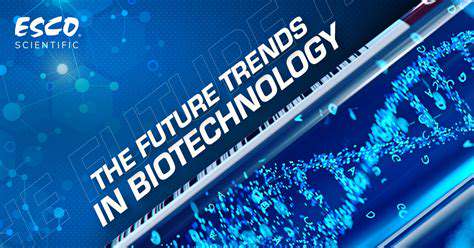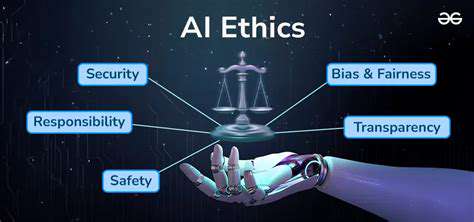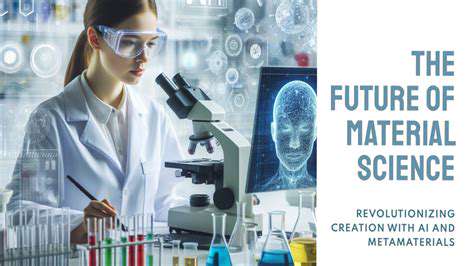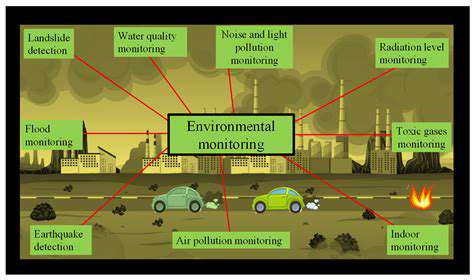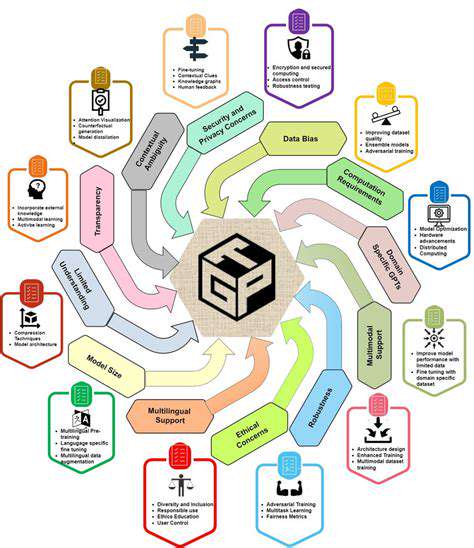What is Synthetic Biology?
Synthetic biology is a rapidly evolving field that combines engineering principles with biological systems to design and construct novel biological parts, devices, and systems. It's essentially like building with biological LEGOs, allowing us to reprogram cells and organisms to perform new functions. This approach has far-reaching implications, from developing new medicines and biofuels to tackling environmental challenges and improving agricultural practices. It's a fascinating blend of biology, chemistry, and engineering, promising innovative solutions to complex global issues.
The Building Blocks of Programmable Life
Fundamental to synthetic biology are the standardized biological parts, often referred to as parts lists. These parts, such as genes, promoters, and ribosome binding sites, are carefully designed and characterized to work predictably together. This modularity allows scientists to assemble these components like Lego bricks, creating complex systems with predetermined behaviors. The availability and standardization of these parts are crucial for facilitating research and collaboration within the field.
The ability to define and predict the behavior of these biological components is essential for the advancement of synthetic biology. Careful design and testing at the component level allows for the assembly of complex systems with predictable outcomes.
Applications in Medicine and Healthcare
Synthetic biology is revolutionizing medicine by enabling the creation of novel therapies and diagnostic tools. For example, researchers are developing engineered bacteria to produce therapeutic proteins, offering a more sustainable and potentially less expensive alternative to traditional methods. The ability to program cells to target specific diseases holds immense promise for personalized medicine and disease treatment. Imagine bacteria programmed to specifically destroy cancerous cells, leaving healthy tissue unharmed. This represents a significant step forward in the fight against disease.
Environmental Applications and Sustainability
Synthetic biology offers promising solutions to environmental challenges. Engineered microorganisms can be deployed to clean up pollutants, remediate contaminated sites, and even produce biofuels from renewable resources. For instance, researchers are engineering algae to produce biofuels, reducing our dependence on fossil fuels and mitigating climate change. The potential for bioremediation and sustainable energy production from synthetic biology is substantial and offers a path toward a more environmentally friendly future.
Ethical Considerations and Public Perception
As synthetic biology progresses, it's crucial to address the ethical considerations and public perception surrounding its applications. The potential for misuse or unintended consequences requires careful consideration and transparent communication. Open dialogue and public engagement are essential to ensure that synthetic biology is developed and deployed responsibly and ethically, fostering public trust and addressing concerns about potential risks.
The Future of Synthetic Biology and its Impact
The future of synthetic biology is bright, with significant potential to transform numerous sectors. Ongoing research and development in areas like gene editing and CRISPR technology are paving the way for even more precise and powerful tools. The integration of synthetic biology with other emerging fields, such as artificial intelligence, will further accelerate its progress and broaden its impact. We can anticipate significant advancements in areas like personalized medicine, sustainable energy, and biomanufacturing, potentially leading to a more sustainable and healthier future for all. Furthermore, the convergence of synthetic biology with other disciplines will drive innovation and create new opportunities across various industries.
De Novo Design and Engineering of Biological Circuits

De Novo Design Principles
De novo design, a cutting-edge approach in various scientific disciplines, involves creating entirely novel structures or systems from scratch, rather than modifying existing ones. This method necessitates a deep understanding of the fundamental principles governing the system's behavior and a sophisticated ability to manipulate these principles to achieve desired outcomes. The core of de novo design lies in the ability to predict and control emergent properties of complex systems.
A key aspect of de novo design is the formulation of specific design criteria. These criteria must be meticulously defined, encompassing factors like desired functionality, material properties, and environmental conditions. Furthermore, the process requires a strong foundation in computational modeling and simulation, enabling the exploration of numerous design options before physical implementation.
Computational Modeling and Simulation
Computational tools are indispensable for de novo design, enabling the exploration of a vast design space and the assessment of numerous potential solutions. Advanced algorithms and software packages facilitate the prediction of material properties, structural stability, and performance characteristics, thereby minimizing the need for expensive and time-consuming experimental iterations.
Simulation allows for in-depth analysis of complex interactions and emergent properties, providing insights that would be difficult or impossible to obtain through traditional experimental methods. This predictive capability is crucial for optimizing designs and ensuring the success of de novo engineering endeavors.
Material Selection and Characterization
The judicious selection of materials is fundamental to the success of de novo design. Materials with specific properties, such as tailored mechanical strength, thermal conductivity, or biocompatibility, are crucial for achieving the desired functionality of the designed system. Careful consideration must be given to the potential interactions between the chosen materials and the surrounding environment.
Advanced characterization techniques are essential for validating the predicted properties of the chosen materials. These techniques help ascertain the materials' suitability for the envisioned application, ensuring that the design meets its specified criteria.
Engineering Principles and Constraints
The application of fundamental engineering principles, such as thermodynamics, mechanics, and fluid dynamics, is crucial in de novo design. These principles provide a framework for understanding the behavior of the system and for optimizing its performance. The incorporation of these principles leads to designs that are not only innovative but also robust and reliable.
Furthermore, realistic constraints, such as manufacturing limitations, cost considerations, and safety regulations, must be incorporated into the design process. Balancing innovation with practicality is key to the successful translation of de novo designs into tangible products or systems.
System Integration and Optimization
The successful integration of various components within a complex system is critical in de novo design. Each component must function seamlessly with the others, contributing to the overall performance and functionality of the system. Careful consideration must be given to the interactions and dependencies between different parts.
Advanced optimization algorithms can be used to refine the design and ensure optimal performance under various conditions. This iterative process of design, simulation, and optimization leads to increasingly sophisticated and efficient systems.
Applications and Future Directions
De novo design has broad applications across diverse fields, from materials science and nanotechnology to biotechnology and medicine. The development of novel materials with enhanced properties, the creation of advanced bio-inspired systems, and the design of personalized medical devices are just a few examples of the potential impact of this approach.
Future research in de novo design will likely focus on developing more sophisticated computational tools and algorithms, expanding the range of materials that can be designed, and integrating design principles with emerging technologies. This will lead to even more innovative and impactful solutions across a wide spectrum of disciplines.
Harnessing Cellular Factories for Sustainable Production
Harnessing the Power of Cellular Metabolism
Cellular metabolism, the intricate network of biochemical reactions within cells, is a powerful force that drives the production of various molecules. Understanding and manipulating these metabolic pathways is crucial for harnessing cellular factories for sustainable production. By optimizing metabolic flux and directing the cellular machinery towards desired products, we can leverage the inherent efficiency of biological systems to create sustainable alternatives to traditional chemical processes.
This approach allows for the production of valuable materials with reduced environmental impact, as it often requires less energy and fewer harmful byproducts compared to conventional methods. The potential for using cellular metabolism to produce biofuels, pharmaceuticals, and other essential products is vast and holds tremendous promise for a more sustainable future.
Engineering Synthetic Pathways
A key aspect of harnessing cellular factories involves engineering synthetic pathways. This involves designing and introducing novel metabolic pathways into cells, enabling them to produce compounds not naturally found in their original metabolic landscape. This process allows for the production of complex molecules that may not be feasible using traditional chemical synthesis.
Advanced genetic engineering techniques, such as CRISPR-Cas9, are crucial for efficiently and precisely modifying cellular genomes. These tools provide powerful capabilities for introducing new genes, modifying existing ones, and regulating metabolic flux in a targeted manner, which ultimately boosts the efficiency of the synthetic pathways.
Optimizing Cellular Efficiency
To maximize the output of cellular factories, optimizing their overall efficiency is essential. This entails enhancing the rate of desired reactions, minimizing side reactions, and improving the overall productivity of the cellular machinery. Factors such as nutrient availability, temperature, and pH play critical roles in cellular function and can be meticulously controlled to achieve optimal conditions.
Furthermore, understanding and addressing bottlenecks in cellular processes is crucial. Identifying and eliminating limitations in the production of target molecules allows for a more efficient and sustainable production process. This optimization can be achieved through various bioengineering strategies.
Cultivation and Scale-up Strategies
Successfully scaling up cellular production requires sophisticated cultivation strategies. This involves optimizing the growth conditions of the engineered cells, ensuring adequate nutrient supply, and controlling environmental parameters to maintain high cell density and productivity. Robust and cost-effective methods for large-scale cultivation of engineered cells are critical for the practical implementation of cellular factories.
Bioreactor Design and Control
Effective bioreactor design and control are essential for optimizing the productivity of cellular factories. These systems must provide optimal conditions for cell growth and product synthesis. The design should consider factors like mixing, temperature control, and gas exchange to maintain a controlled and productive environment for the cells. Advanced control strategies, such as real-time monitoring and feedback systems, are crucial for ensuring optimal conditions.
Cost-Effectiveness and Sustainability
The economic viability of cellular factories is a critical aspect to consider. Strategies for minimizing production costs, maximizing yield, and reducing environmental impact are essential for the long-term success of this approach. This includes optimizing nutrient utilization, minimizing waste production, and exploring renewable resources for cultivation.
Ultimately, the sustainability of cellular factories depends on their ability to reduce reliance on fossil fuels and harmful chemicals while maximizing the production of valuable products. This requires careful consideration of the entire production lifecycle, from raw material sourcing to product disposal.
Ethical Considerations and Future Directions
The development and implementation of cellular factories raise important ethical considerations, especially concerning the potential applications and unintended consequences of altering biological systems. Careful consideration of the potential risks and benefits is necessary for responsible development and application of this technology.
Further research is needed to explore the long-term environmental impact of cellular factories and to develop strategies for ensuring responsible and sustainable production. Continued innovation in bioengineering, synthetic biology, and metabolic engineering is essential to unlock the full potential of cellular factories in creating a more sustainable future.
Quantum mechanics, a field of physics that deals with the behavior of matter at the atomic and subatomic levels, has the potential to revolutionize various aspects of our lives, especially in the realm of information processing. This revolutionary potential stems from the unique properties of quantum systems, which allow for the creation of quantum computers capable of performing calculations that are impossible for even the most powerful classical computers. Harnessing these capabilities promises to unlock solutions to complex problems in diverse fields, from drug discovery to materials science. The fundamental principles of superposition and entanglement, core concepts in quantum mechanics, enable quantum computers to explore multiple possibilities simultaneously, leading to unprecedented processing power.
Ethical Considerations and Future Directions

Ethical Implications of Emerging Technologies
The rapid advancement of technologies like artificial intelligence, genetic engineering, and advanced robotics presents a multitude of ethical dilemmas. These technologies have the potential to revolutionize various aspects of human life, but their implementation also raises significant concerns regarding fairness, privacy, and the potential for misuse. Careful consideration of the ethical implications of these innovations is crucial to ensure that they are developed and deployed responsibly. We need to establish clear guidelines and regulations to mitigate potential risks and safeguard the well-being of individuals and society as a whole. The development of ethical frameworks and standards must be a priority in the research and implementation of these powerful new tools.
One particularly important area of concern is the potential for bias in algorithms used in AI systems. If these systems are trained on biased datasets, they can perpetuate and amplify existing societal inequalities. This is a critical issue, as AI is increasingly used in areas like loan applications, hiring processes, and criminal justice. Addressing bias in AI is essential to ensuring fairness and equity in the application of these technologies. Developing methods for detecting and mitigating bias in algorithms, and ensuring diverse and representative datasets are used for training, is crucial for preventing harmful consequences.
Potential Future Impacts on Society
The transformative potential of these emerging technologies extends far beyond the immediate applications. The integration of AI into various industries could lead to significant shifts in the workforce, demanding new skills and educational opportunities for individuals. Reimagining education and training programs to equip people with the skills needed to thrive in a technologically advanced society is essential to navigate this evolving landscape. We must proactively address the potential for displacement and unemployment, ensuring a just transition for those affected by automation.
Furthermore, the development of personalized medicine, driven by advancements in genetic engineering, could dramatically improve healthcare outcomes. However, access to these technologies must be equitable, and concerns about data privacy and the potential for genetic discrimination must be carefully addressed. The ethical considerations surrounding genetic manipulation must be rigorously debated and regulated to prevent unintended consequences. Responsible development and deployment of these technologies are critical to maximizing their benefits while mitigating potential harms. The future will undoubtedly be shaped by these advancements, and proactive planning will be vital for building a society that benefits from these innovations safely and responsibly.
The potential for autonomous vehicles to revolutionize transportation is undeniable. However, navigating the complexities of liability in accidents involving these vehicles will require careful legal and ethical considerations. Developing robust safety protocols and legal frameworks for autonomous vehicles is essential for ensuring public confidence and safety. These technologies will continue to reshape the world around us in profound ways, creating new opportunities while presenting new challenges. It is our responsibility to carefully consider and address these challenges to ensure a future that is both innovative and ethical.
The potential for manipulation of information through advanced technologies, such as deepfakes, presents a significant threat to trust and transparency. We need to develop robust methods for detecting and mitigating the spread of misinformation and disinformation. Protecting the integrity of information is paramount to maintaining a well-functioning society. Education and awareness campaigns are essential to equip individuals with the critical thinking skills needed to discern credible information from falsehoods.
